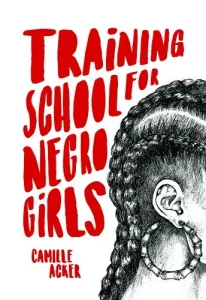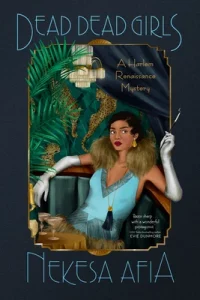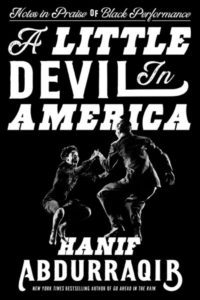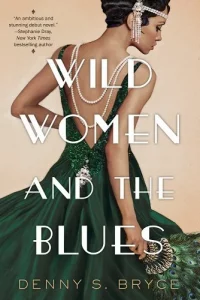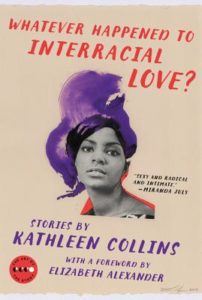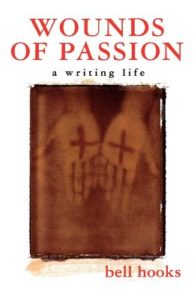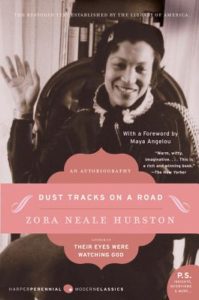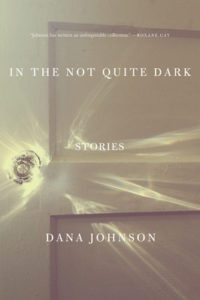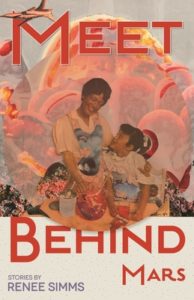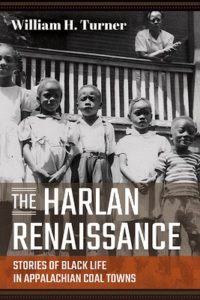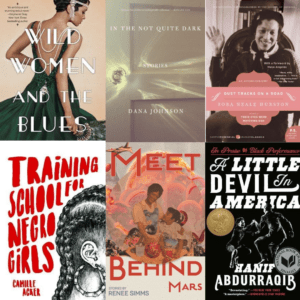
This week, the editors have put together a list of books we love by Black authors. Some are forthcoming, some are several years old; some are fiction, some are memoir; all are absolutely worth your time, regardless of the month.
***
Training School for Negro Girls by Camille Acker
In her debut short story collection, Camille Acker unleashes the irony and tragic comedy of respectability onto a wide-ranging cast of characters, all of whom call Washington, DC, home. A woke millennial tries to fight gentrification, only to learn she’s part of the problem; a grade school teacher dreams of a better DC, only to take out her frustrations on her students; and a young piano player wins a competition, only to learn the prize is worthless. Ultimately, they are confronted with the fact that respectability does not equal freedom. Instead, they must learn to trust their own conflicted judgment and fight to create their own sense of space and self.
Dead Dead Girls by Nekesa Afia
The start of an exciting new historical mystery series set during the Harlem Renaissance.
Harlem, 1926. Young Black women like Louise Lloyd are ending up dead. Following a harrowing kidnapping ordeal when she was in her teens, Louise is doing everything she can to maintain a normal life. She’s succeeding, too. She spends her days working at Maggie’s Café and her nights at the Zodiac, Harlem’s hottest speakeasy. Louise’s friends, especially her girlfriend, Rosa Maria Moreno, might say she’s running from her past and the notoriety that still stalks her, but don’t tell her that. When a girl turns up dead in front of the café, Louise is forced to confront something she’s been trying to ignore–two other local Black girls have been murdered in the past few weeks. After an altercation with a police officer gets her arrested, Louise is given an ultimatum: She can either help solve the case or wind up in a jail cell. Louise has no choice but to investigate and soon finds herself toe-to-toe with a murderous mastermind hell-bent on taking more lives, maybe even her own….
A Little Devil in America: In Praise of Black Performance by Hanif Abdurraqib
Yes, this was last year’s list, too, but it is that good, and this is the pre-order for paperback so…
At the March on Washington in 1963, Josephine Baker was fifty-seven years old, well beyond her most prolific days. But in her speech she was in a mood to consider her life, her legacy, her departure from the country she was now triumphantly returning to. “I was a devil in other countries, and I was a little devil in America, too,” she told the crowd. Inspired by these few words, Hanif Abdurraqib has written a profound and lasting reflection on how Black performance is inextricably woven into the fabric of American culture. Each moment in every performance he examines–whether it’s the twenty-seven seconds in “Gimme Shelter” in which Merry Clayton wails the words “rape, murder,” a schoolyard fistfight, a dance marathon, or the instant in a game of spades right after the cards are dealt–has layers of resonance in Black and white cultures, the politics of American empire, and Abdurraqib’s own personal history of love, grief, and performance. Abdurraqib writes prose brimming with jubilation and pain, infused with the lyricism and rhythm of the musicians he loves. With care and generosity, he explains the poignancy of performances big and small, each one feeling intensely familiar and vital, both timeless and desperately urgent. Filled with sharp insight, humor, and heart, A Little Devil in America exalts the Black performance that unfolds in specific moments in time and space–from midcentury Paris to the moon, and back down again to a cramped living room in Columbus, Ohio.
In a stirring and impeccably researched novel of Jazz-age Chicago in all its vibrant life, two stories intertwine nearly a hundred years apart, as a chorus girl and a film student deal with loss, forgiveness, and love…in all its joy, sadness, and imperfections.
1925: Chicago is the jazz capital of the world, and the Dreamland Café is the ritziest black-and-tan club in town. Honoree Dalcour is a sharecropper’s daughter, willing to work hard and dance every night on her way to the top. Dreamland offers a path to the good life, socializing with celebrities like Louis Armstrong and filmmaker Oscar Micheaux. But Chicago is also awash in bootleg whiskey, gambling, and gangsters. And a young woman driven by ambition might risk more than she can stand to lose. Film student Sawyer Hayes arrives at the bedside of 110-year-old Honoree Dalcour, still reeling from a devastating loss that has taken him right to the brink. Sawyer has rested all his hope on this frail but formidable woman, the only living link to the legendary Oscar Micheaux. If he’s right–if she can fill in the blanks in his research, perhaps he can complete his thesis and begin a new chapter in his life. But the links Honoree makes are not ones he’s expecting…
Whatever Happened to Interracial Love? by Kathleen Collins
Now available in Ecco’s Art of the Story series: a never-before-published collection of stories from a brilliant yet little known African American artist and filmmaker–a contemporary of revered writers including Toni Cade Bambara, Laurie Colwin, Ann Beattie, Amy Hempel, and Grace Paley–whose prescient work has recently resurfaced to wide acclaim. Humorous, poignant, perceptive, and full of grace, Kathleen Collins’s stories masterfully blend the quotidian and the profound in a personal, intimate way, exploring deep, far-reaching issues–race, gender, family, and sexuality–that shape the ordinary moments in our lives.
In “The Uncle,” a young girl who idolizes her handsome uncle and his beautiful wife makes a haunting discovery about their lives. In “Only Once,” a woman reminisces about her charming daredevil of a lover and his ultimate–and final–act of foolishness. Collins’s work seamlessly integrates the African-American experience in her characters’ lives, creating rich, devastatingly familiar, full-bodied men, women, and children who transcend the symbolic, penetrating both the reader’s head and heart.
Wounds of Passion: a Writing Life by bell hooks
With her customary boldness and insight, bell hooks critically reflects on the impact of birth control and the women’s movement on our lives. Resisting the notion that love and writing don’t mix, she begins a fifteen-year relationship with a gifted poet and scholar, who inspires and encourages her. Writing the acclaimed book Ain’t I a Woman: Black Women and Feminism at the age of nineteen, she begins to emerge as a brilliant social critic and public intellectual.
Wounds of Passion: A Writing Life describes a woman’s struggle to devote herself to writing, sharing the difficulties, the triumphs, the pleasures, and the dangers. Eloquent and powerful, this book lets us see the ways one woman writer works to find her own voice while creating a love relationship based on feminist thinking. With courage and wisdom she reveals intimate details and provocative ideas, offering an illuminating vision of a writer’s life.
Dust Tracks on a Road: A Memoir by Zora Neale Hurston
“I have been in Sorrow’s kitchen and licked out all the pots. Then I have stood on the peaky mountain wrapped in rainbows with a harp and a sword in my hands.”
First published in 1942 at the crest of her popularity, this is Zora Neale Hurston’s unrestrained account of her rise from childhood poverty in the rural South to prominence among the leading artists and intellectuals of the Harlem Renaissance. Full of wit and wisdom, and audaciously spirited, “Dust Tracks on a Road” offers a rare, poignant glimpse of the life — public and private — of a premier African-American writer, artist, anthropologist and champion of the black heritage.
In the Not Quite Dark: Stories by Dana Johnson
A collection of bold stories set in downtown Los Angeles that examine large issues like love, class, and race, and how they influence and define our most intimate moments. With deep insight into character, intimate relationships, and the modern search for personal freedom, In the Not Quite Dark is powerful collection of stories that feels both urgent and timeless from Dana Johnson, the author of the prize-winning collection Break Any Woman Down.
In The Liberace Museum, a mixed-race couple leave the South toward the destination of Vegas, crossing miles of road and history to the promised land of consumption; in Rogues, a young man on break from college lands in his brother’s Inland Empire neighborhood during a rash of unexplained robberies; in She Deserves Everything She Gets, a woman listens to the strict advice given to her spoiled niece about going away to college, reflecting on her own experience and the night she lost her best friend; and in the collection’s title story, a man setting down roots in downtown L.A. is haunted by the specter of both gentrification and a young female tourist, whose body was found in the water tower of a neighboring building.
Love War Stories by Ivelisse Rodriguez
Puerto Rican girls are brought up to want one thing: true love. Yet they are raised by women whose lives are marked by broken promises, grief, and betrayal. While some believe that they’ll be the ones to finally make it work, others swear not to repeat cycles of violence. This collection documents how these “love wars” break out across generations as individuals find themselves caught in the crosshairs of romance, expectations, and community.
Meet Behind Mars by Renee Simms
In many of her stories, Simms exposes her own interest in issues concerning time and space. For example, in “Rebel Airplanes,” an L.A. engineer works by day on city sewers and by night on R-C planes that she yearns to launch into the cosmos. The character-driven stories in Meet Behind Mars offer beautiful insight into the emotional lives of caretakers, auto workers, dancers, and pawn shop employees. In “High Country,” a frustrated would-be novelist considers ditching her family in the middle of the desert. In “Dive,” an adoptee returns to her adoptive home, still haunted by histories she does not know. Simms writes from the voice of women and girls who struggle under structural oppression and draws from the storytelling tradition best represented by writers like Edward P. Jones, whose characters have experiences that are specific to black Americans living in the late twentieth and twenty-first centuries. One instance of this is in “The Art of Heroine Worship,” in which black families integrate into a white suburb of Detroit in the 1970s.
The stories in this collection span forty years and two continents and range in structure from epistolary to traditionally structured realism, with touches of absurdity, humor, and magic.
Heads of the Colored People by Nafissa Thompson-Spires
Each captivating story plunges headfirst into the lives of utterly original characters. Some are darkly humorous–two mothers exchanging snide remarks through notes in their kids’ backpacks–while others are devastatingly poignant. In the title story, when a cosplayer, dressed as his favorite anime character, is mistaken for a violent threat the consequences are dire; in another story, a teen struggles between her upper middle class upbringing and her desire to fully connect with so-called black culture.
The Harlan Renaissance: Stories of Black Life in Appalachian Coal Towns by William H. Turner
The Harlan Renaissance is an intimate remembrance of kinship and community in eastern Kentucky’s coal towns written by one of the luminaries of Appalachian studies, William Turner. Turner reconstructs Black life in the company towns in and around Harlan County during coal’s final postwar boom years, which built toward an enduring bust as the children of Black miners, like the author, left the region in search of better opportunities. The Harlan Renaissance invites readers into what might be an unfamiliar Appalachia: one studded by large and vibrant Black communities, where families took the pulse of the nation through magazines like Jet and Ebony and through the news that traveled within Black churches, schools, and restaurants. Difficult choices for the future were made as parents considered the unpredictable nature of Appalachia’s economic realities alongside the unpredictable nature of a national movement toward civil rights. Unfolding through layers of sociological insight and oral history, The Harlan Renaissance centers the sympathetic perspectives and critical eye of a master narrator of Black life.

